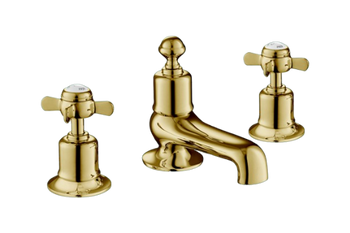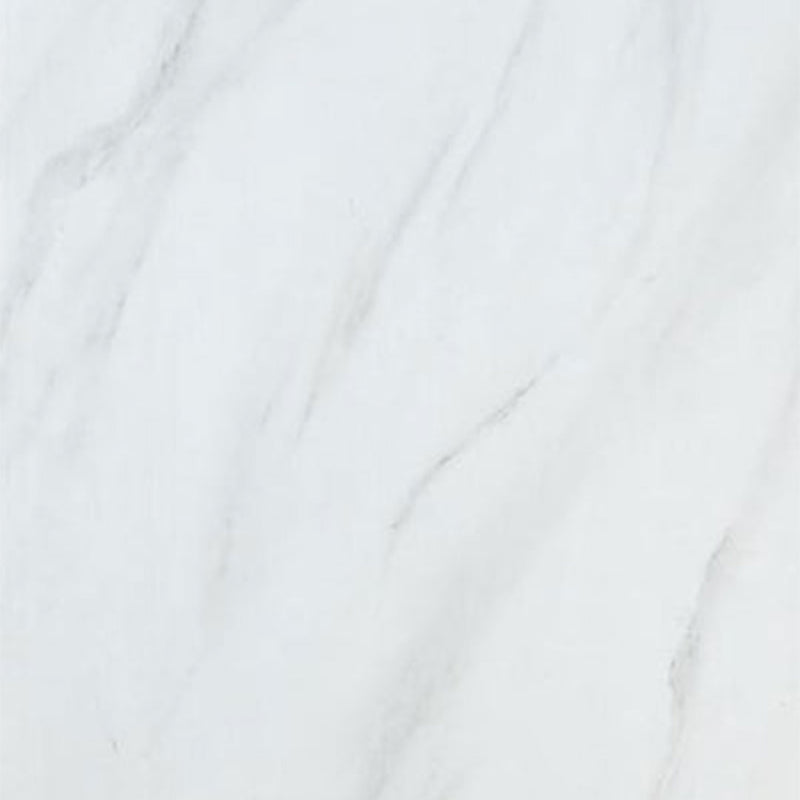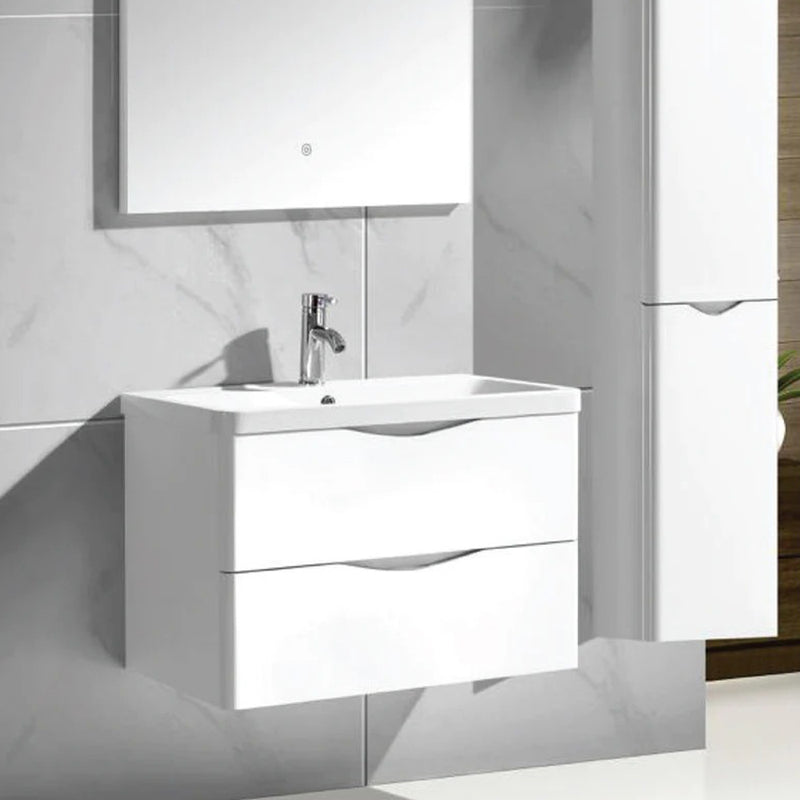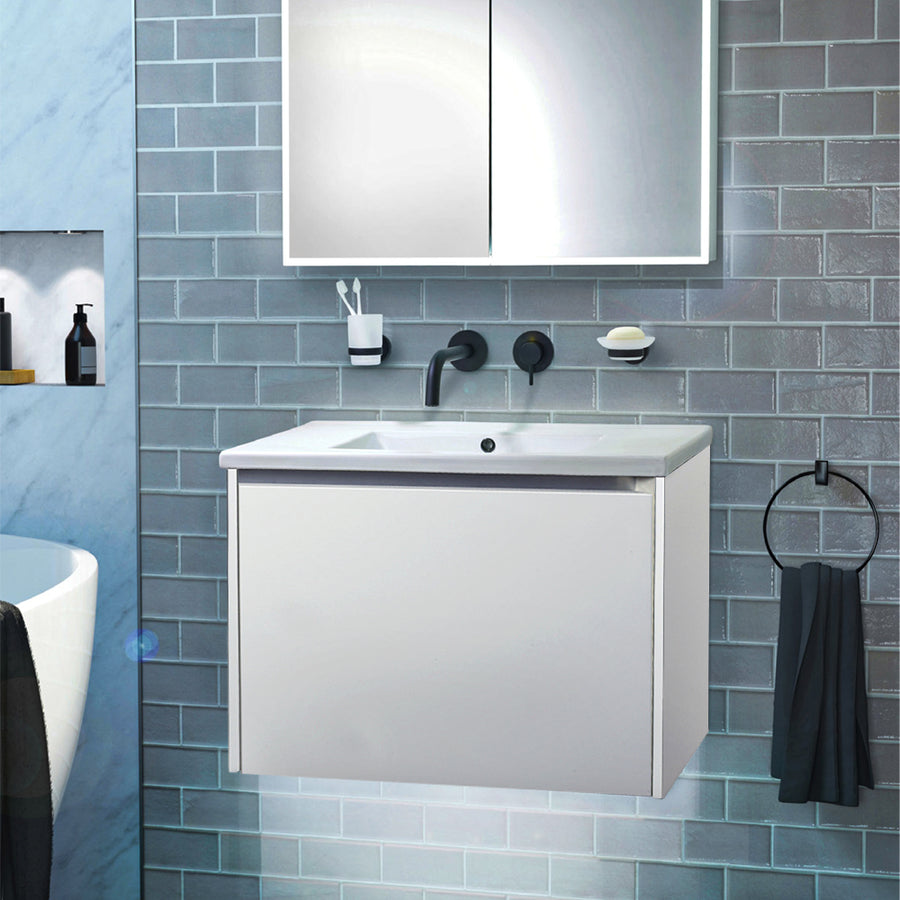Revamping your bathroom isn't just about upgrading the aesthetics; it's about enhancing the functionality and comfort of your home. While it's true that bathroom remodeling can be a significant investment, the long-term benefits far outweigh the initial costs. To embark on this transformative journey with confidence and ease, it's crucial to have a comprehensive bathroom renovation checklist in place. This guide will not only help you navigate the process smoothly but also ensure that every detail is meticulously planned and executed, leaving you with a space that exceeds your expectations.
Budget
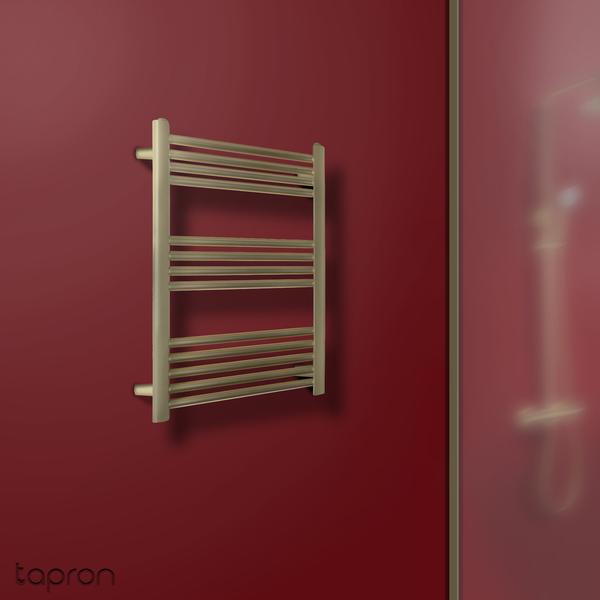 |
| Image Credit : Tapron.co.uk |
Budgeting for your bathroom renovation is the cornerstone of a successful project, ensuring that you stay on track financially while bringing your design dreams to life. Discover how to save money on your bathroom renovation with expert budget-friendly-bathroom-remodel-ideas. Here's a deeper dive into the crucial aspects of budgeting and how to navigate them with savvy financial planning:
1. Initial Assessment:
Start by conducting a thorough assessment of your finances to determine how much you can comfortably allocate to your bathroom renovation. Consider factors such as your savings, available credit, and any additional sources of funding you may have.
2. Prioritize Spending:
Identify your renovation priorities and allocate your budget accordingly. Determine which aspects of your bathroom renovation are non-negotiables and where you can afford to be more flexible.
3. Research and Quotes:
Research the cost of materials, labor, and other expenses associated with your renovation project. Obtain multiple quotes from contractors and suppliers to ensure you're getting the best value for your money.
4. Contingency Fund:
Set aside a contingency fund to cover unexpected expenses that may arise during the renovation process. It's wise to allocate around 10-20% of your total budget for unforeseen costs or project changes.
5. DIY vs. Professional Help:
Decide whether you'll be tackling any aspects of the renovation yourself or hiring professionals for the entire project. DIY can save money, but be realistic about your skills and the potential risks involved.
6. Quality vs. Cost:
Strike a balance between quality and cost when selecting materials and fixtures for your bathroom. While it's tempting to opt for the cheapest options, investing in higher-quality items can save you money in the long run by reducing maintenance and replacement costs.
7. Timeline Considerations:
Keep in mind that the timeline of your renovation can impact your budget. Delays, changes, and unexpected issues can prolong the project and incur additional expenses, so plan accordingly.
8. Negotiation and Flexibility:
Don't hesitate to negotiate with contractors and suppliers to get the best possible deals. Be open to alternative solutions and compromises that can help you stay within budget without sacrificing quality.
9. Track Expenses:
Keep meticulous records of all your renovation expenses, including receipts, invoices, and contracts. This will help you stay organized and monitor your spending throughout the project.
10. Future Planning:
Consider the long-term value of your renovation investment. While it's important to stick to your budget now, think about how your choices will impact the resale value of your home and your overall satisfaction with the finished result.
By approaching your bathroom renovation budget with careful consideration and strategic planning, you can achieve your design goals while maintaining financial stability. With smart budgeting practices and a bit of creativity, you can create the bathroom of your dreams without breaking the bank.
Design
Designing your dream bathroom is an exhilarating journey filled with endless possibilities and creative opportunities. Here's a closer look at the exciting process of bringing your vision to life and crafting a space that perfectly reflects your style and functionality needs:
1. Visual Inspiration:
Start by gathering inspiration from various sources such as home decor magazines, online galleries, and social media platforms like Pinterest and Instagram. Create a mood board or digital scrapbook to capture images, colors, and design elements that resonate with your aesthetic preferences.
2. Space Assessment:
Assess the available space in your bathroom and consider how you can optimize it for maximum functionality and comfort. Take accurate measurements of the room, including dimensions, ceiling height, and any architectural features or obstacles that may impact your design plans.
3. Layout Planning:
Experiment with different layout configurations to determine the most efficient arrangement of fixtures and elements within your bathroom space. Consider factors such as traffic flow, accessibility, and the ergonomic placement of key components like the bathtub, shower, vanity, and toilet.
4. Fixture Selection:
Choose fixtures and fittings that not only complement your design aesthetic but also align with your budget and performance expectations. Explore options for bathtubs, showers, sinks, toilets, faucets, and hardware, keeping in mind factors such as durability, ease of maintenance, and water efficiency.
5. Storage Solutions:
Incorporate practical storage solutions into your bathroom design to minimize clutter and maximize organization. Explore options such as built-in cabinets, floating shelves, recessed niches, and vanity units with ample drawer and cupboard space to keep essentials neatly tucked away.
6. Material Exploration:
Explore a wide range of materials and finishes to add texture, depth, and visual interest to your bathroom design. From luxurious marble and sleek porcelain tiles to warm wood accents and contemporary concrete surfaces, the possibilities are virtually endless. Consider factors such as durability, maintenance requirements, and aesthetic cohesion with the rest of your home.
7. Lighting Design:
Illuminate your bathroom space effectively with a thoughtfully designed lighting scheme that combines ambient, task, and accent lighting for optimal functionality and ambiance. Explore options such as recessed ceiling lights, pendant fixtures, wall sconces, and vanity mirrors with integrated lighting to create layers of light that enhance both form and function.
8. Color Palette:
Choose a cohesive color palette that sets the tone for your bathroom design and creates a harmonious visual flow throughout the space. Experiment with different hues, shades, and tones to evoke the desired mood, whether it's serene and spa-like or bold and dramatic. Consider factors such as natural light, room size, and personal preferences when selecting colors for walls, tiles, cabinetry, and accents.
9. Finishing Touches:
Add personality and character to your bathroom design with carefully curated finishing touches and accessories. From decorative mirrors and artwork to plush towels, bath rugs, and scented candles, these small details can elevate the overall look and feel of your space and make it truly feel like home.
10. Flexibility and Adaptability:
Remain open to changes and adjustments as you refine your bathroom design plans. Be prepared to pivot if necessary based on budget constraints, structural considerations, or new design inspirations that emerge along the way. Embrace the creative process and trust your instincts to guide you toward a final design that exceeds your expectations.
I've recently explored a fascinating blog that could be incredibly useful for you. Check it out!
Materials
Selecting the right materials for your bathroom renovation is a pivotal step that can significantly impact the durability, aesthetics, and overall success of your project. Here's a closer look at the importance of choosing materials that not only align with your budget and design vision but also offer the resilience and longevity required to withstand the unique challenges of a moisture-prone environment:
1. Flooring:
When it comes to bathroom flooring, durability and water resistance are paramount. Opt for materials such as ceramic or porcelain tiles, luxury vinyl planks, or natural stone like marble or granite. These materials are not only resilient against moisture but also come in a wide range of colors, textures, and styles to suit any design aesthetic.
2. Wall Coverings:
Choose wall coverings that are specifically designed for high-moisture areas like bathrooms. Options include ceramic or porcelain tiles, moisture-resistant paint, waterproof wall panels, or beadboard. Consider incorporating accent tiles or decorative patterns to add visual interest and personality to your space.
3. Countertops:
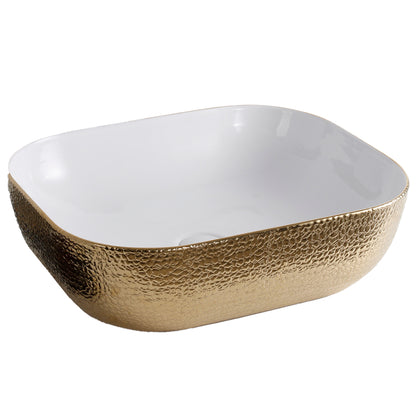 |
| Image Credit : Goldbathroom.uk |
Select countertops that can withstand exposure to water, heat, and daily use without sacrificing style or functionality. Popular choices include granite, quartz, solid surface, or porcelain slab countertops. These materials offer durability, stain resistance, and easy maintenance, making them ideal for busy bathroom environments.
4. Cabinetry:
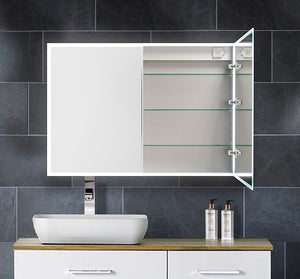 |
| Image credit : Tapron.co.uk |
Invest in quality cabinetry constructed from moisture-resistant materials such as solid wood, plywood, or medium-density fiberboard (MDF) with a waterproof finish. Look for features like soft-close hinges, adjustable shelves, and durable hardware to enhance both functionality and longevity.
5. Fixtures and Hardware:
 |
| Image Credit : Goldbathroom.uk |
Choose fixtures and hardware made from corrosion-resistant materials such as stainless steel, brass, or chrome. Consider options like WaterSense-certified faucets and low-flow showerheads to conserve water without compromising performance. Pay attention to finishes and styles that complement your overall design theme.
6. Sealants and Adhesives:
Use high-quality sealants and adhesives specifically formulated for bathroom applications to ensure proper waterproofing and moisture protection. Seal seams, joints, and edges with silicone caulking to prevent water infiltration and potential damage to underlying materials.
7. Ventilation:
Incorporate proper ventilation into your bathroom design to minimize moisture buildup and prevent mold and mildew growth. Install a ventilation fan with sufficient capacity to adequately circulate air and expel excess humidity. Consider adding operable windows or skylights for natural ventilation and additional airflow.
8. Accessories and Accents:
 |
| Image Credit : Goldbathroom.uk |
Complete your bathroom renovation with stylish accessories and accents that enhance both form and function. Choose towel bars, robe hooks, toilet paper holders, and shower caddies made from rust-resistant materials like stainless steel or aluminum. Incorporate decorative elements like mirrors, lighting fixtures, and artwork to add personality and visual appeal to your space.
Fixtures
In the realm of bathroom renovation, attention to detail is paramount, and fixtures play a pivotal role in shaping the overall aesthetic and functionality of the space. Coordinating all your fixtures, from lighting fixtures to towel racks and cabinet hardware, is crucial for achieving a cohesive and visually appealing bathroom design.
When fixtures are coordinated, they establish a unified style throughout the bathroom, creating harmony and cohesion. Whether you prefer modern minimalism, classic elegance, or eclectic charm, selecting fixtures that complement each other in terms of design, finish, and form helps reinforce your chosen aesthetic theme.
Furthermore, matching fixtures contribute to visual continuity, preventing the space from feeling disjointed or cluttered. Consistency in design elements fosters a sense of balance and order, making the bathroom feel more cohesive and well-organized.
Coordinating fixtures also enhances functionality and usability in the bathroom. Choosing fixtures that work seamlessly together in terms of size, scale, and placement ensures optimal performance and accessibility, making daily tasks such as grooming, bathing, and storage more convenient and efficient.
In addition to aesthetic and functional benefits, coordinated fixtures simplify maintenance and cleaning routines. Uniformity in materials and finishes reduces the likelihood of mismatched cleaning products or techniques damaging specific fixtures, resulting in a more streamlined and efficient maintenance regimen.
Moreover, coordinating fixtures offers opportunities for customization and personalization. Whether you opt for sleek brushed nickel finishes, timeless matte black accents, or luxurious brass hardware, coordinated fixtures enable you to tailor the bathroom to reflect your personality and taste.
Finally, paying attention to even the smallest details, such as coordinating fixtures, demonstrates a commitment to craftsmanship and design excellence. Thoughtfully curated fixtures serve as subtle yet impactful design elements that elevate the overall aesthetic and ambiance of the bathroom, leaving a lasting impression on occupants and visitors alike.
Schedule
Establishing a schedule is a crucial step in the bathroom remodeling process, as it provides structure and accountability to the project timeline. Once you have a clear idea of the tasks involved and the sequence in which they need to be completed, creating a timeline allows you to allocate resources efficiently and set realistic deadlines. Having specific milestones and deadlines can help keep the project on track, even in the face of unexpected challenges or delays. Additionally, a well-defined schedule enables effective communication and coordination among contractors, subcontractors, and other stakeholders, ensuring that everyone is aligned and working towards the same goals. By proactively managing the project timeline, you can minimize disruptions, optimize productivity, and ultimately expedite the completion of your bathroom remodel, bringing you closer to enjoying your newly renovated space.
Plumbing
When it comes to bathroom renovation, addressing plumbing fixtures is paramount for both functionality and aesthetics. Upgrading or repairing fixtures such as toilets, sinks, and showerheads not only improves water efficiency and performance but also enhances the overall appearance of the space. Additionally, replacing bathroom mirrors, drawer pulls, and shower doors can have a transformative effect on the room's ambiance and style. Whether you opt for modern, sleek designs or classic, timeless finishes, updating these elements can breathe new life into your bathroom and create a cohesive, visually appealing look. Furthermore, investing in high-quality plumbing fixtures and accessories ensures durability and longevity, reducing the need for frequent repairs or replacements in the future. By prioritizing plumbing upgrades as part of your bathroom renovation project, you can achieve a functional, stylish space that meets your needs and reflects your personal taste.
Lighting
Proper lighting is crucial for creating a functional and inviting bathroom space. Inadequate lighting can result in a dull atmosphere and make tasks like shaving or applying makeup challenging. Bright light fixtures, strategically placed, ensure optimal visibility and functionality in your bathroom. Consider installing recessed lighting fixtures in the ceiling to evenly distribute light throughout the space. Additionally, incorporating task lighting near mirrors and vanity areas can enhance visibility for grooming tasks. To customize the ambiance, consider installing a dimming switch, allowing you to adjust the brightness according to your preferences and mood. This flexibility enables you to create a relaxing atmosphere for a soak in the tub or a brighter, energizing environment for your morning routine. By prioritizing lighting as part of your bathroom renovation, you can elevate both the aesthetics and functionality of the space, ensuring a pleasant and comfortable experience for all users.
Cabinets and storage
When undertaking a bathroom renovation, it's essential to prioritize storage solutions and cabinets to ensure functionality and organization in the space. Cabinets play a vital role in maximizing storage capacity and keeping your bathroom essentials neatly organized and easily accessible. Consider incorporating various types of cabinets, including base cabinets, wall-mounted cabinets, and tower cabinets above toilets, to optimize storage space without compromising on style.
When selecting cabinets, prioritize functionality and durability to ensure they can accommodate all your bathroom belongings effectively. Choose cabinets with adjustable shelves, drawers, and compartments to customize storage according to your specific needs. Additionally, opt for materials that can withstand moisture and humidity, such as moisture-resistant wood or waterproof laminate, to prevent damage and ensure longevity.
In addition to traditional cabinets, consider integrating innovative storage solutions like built-in shelving, pull-out baskets, or recessed niches to maximize storage capacity and optimize space utilization. These versatile storage options can help you make the most of every inch of available space while adding visual interest to your bathroom design.
Furthermore, incorporating towel racks, hooks, and other accessories can enhance the functionality and convenience of your bathroom storage. Install towel racks near showers or bathtubs for easy access to towels, robes, and clothing, and consider adding hooks or racks inside cabinet doors to hang hairdryers, brushes, or other grooming tools.
By prioritizing cabinets and storage as part of your bathroom renovation, you can create a well-organized and clutter-free space that meets your practical needs while enhancing the overall aesthetics and functionality of your bathroom. With thoughtful planning and attention to detail, you can design a bathroom that is both beautiful and highly functional, ensuring a comfortable and enjoyable experience for years to come.
Walls and flooring
When it comes to bathroom renovations, selecting the right materials for walls and flooring is crucial to ensure durability, functionality, and aesthetic appeal. While there is a wide range of materials available, prioritizing waterproof options is essential to withstand the moisture-rich environment of bathrooms effectively.
Ceramic, marble, and granite tiles are popular choices for both flooring and wall surfaces due to their durability, water resistance, and timeless aesthetic appeal. These materials offer a wide range of colors, patterns, and textures to suit various design preferences while providing long-lasting performance in wet environments.
For a more budget-friendly option, vinyl tile flooring is an excellent choice for bathrooms. Available in a variety of styles, including sheet vinyl, vinyl tile, and luxury vinyl plank, vinyl flooring offers affordability, durability, and ease of maintenance. Additionally, vinyl flooring is slip-resistant, making it a safe and practical choice for bathrooms.
Another option to consider for bathroom flooring is cement tiles, known for their durability and versatility in design. Cement tiles come in a variety of patterns and colors, allowing you to create unique and personalized flooring designs that complement your overall bathroom aesthetic.
Regardless of the material you choose for your bathroom walls and flooring, prioritize durability and slip resistance to ensure safety and longevity. Proper installation and maintenance are also essential to maximize the lifespan of your bathroom surfaces and preserve their appearance over time.
By selecting waterproof materials such as ceramic, marble, granite, vinyl, or cement tiles for your bathroom walls and flooring, you can create a stylish, functional, and long-lasting space that enhances the overall beauty and value of your home. With careful consideration and attention to detail, you can design a bathroom that meets your practical needs while reflecting your personal style and taste.
Hire a Contractor
Hiring a professional contractor for your bathroom renovation project is a crucial step towards achieving your dream bathroom with efficiency and precision. A skilled contractor, along with their experienced team of workers, brings a wealth of knowledge and expertise to the table, ensuring that every aspect of your renovation is executed flawlessly.
One of the key benefits of hiring a contractor is their ability to assist you in creating a comprehensive checklist tailored to your specific needs and preferences. From initial planning and budgeting to selecting materials, coordinating tradespeople, and managing the construction process, a contractor streamlines the entire renovation journey, eliminating guesswork and minimizing errors.
With their extensive experience in bathroom remodels, contractors can quickly identify potential challenges and proactively address them to prevent delays or complications. Whether it's navigating structural issues, coordinating plumbing and electrical work, or managing subcontractors, contractors have the expertise to keep your project on track and within budget.
Furthermore, hiring a contractor ensures that your renovation is completed efficiently and to the highest quality standards. Contractors have access to professional-grade tools, equipment, and materials, allowing them to deliver superior craftsmanship and impeccable finishes that exceed your expectations.
By entrusting your bathroom renovation to a reputable contractor, you can rest assured that every detail of your project is handled with care and precision. From concept to completion, contractors work tirelessly to bring your vision to life, ensuring that you can enjoy your dream bathroom with confidence and peace of mind.
In short , hiring a contractor for your bathroom renovation offers numerous benefits, including expert guidance, efficient project management, and superior craftsmanship. By partnering with a skilled professional, you can turn your renovation aspirations into reality while avoiding common pitfalls and maximizing the value of your investment.
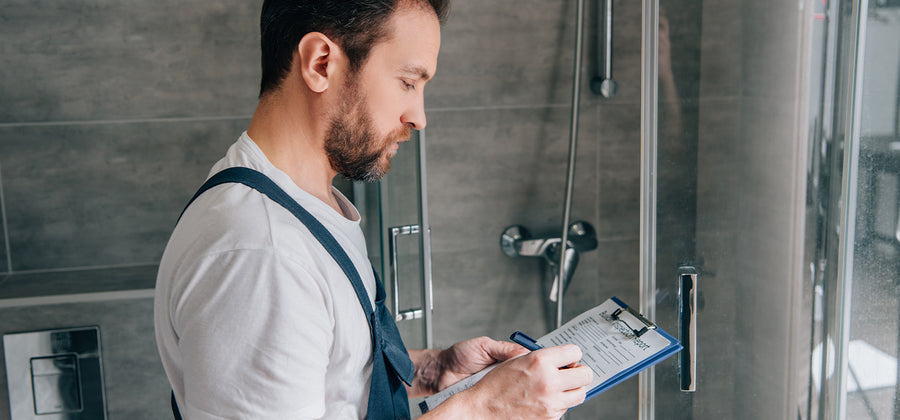 |
| Image Credit : Tapron.co.uk |
For further insights, you might find What to Look for When Hiring a Bathroom Fitter an invaluable resource.

